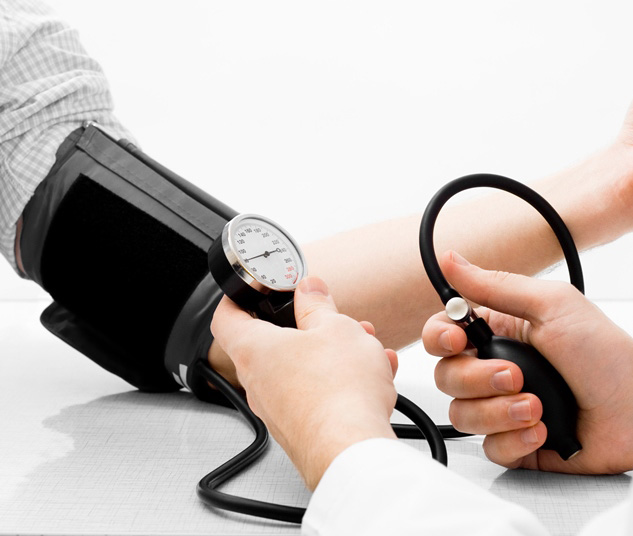Exercise: As Treatment To Manage Blood Pressure
Many studies involving different age groups and differing exercise have shown that regular physical activity lowers blood pressure for those who have hypertension. A review of over 20 physical activity and blood pressure studies showed that, systolic blood pressure is lowered about 11 mm Hg and diastolic blood pressure is reduced an average of 8 mm Hg with regular exercise. Those effects have been documented for men, women, and children and can occur after just a few weeks of training.
Lowering blood pressure 8 to 11 mm Hg is similar to the changes found after treatment with a typical blood pressure-lowering medication. Reducing blood pressure to this degree can reduce stroke and heart attack rates by 25 percent! So, exercise can be the difference between being placed on drugs, with all their possible side effects and cost, and not needing any other treatment. For others, exercise can eliminate the need for one or more blood pressure control, exercise helps you feel better, decreases other risks for heart and blood vessel disease, lowers body fat, and improves your fitness level. On the other hand, blood pressure medicines do none of those. And remember, the best they can do is not make you feel worse.
- Kinds of Exercise That Lower Blood Pressure
Nearly all exercises lower blood pressure. Endurance exercise such as walking, jogging, swimming. stair climbing, and bike riding can help control blood pressure. Even weight lifting can be used to treat hyper-tension. Practically any physical exercise you can think of can be used to lower your blood pressure. However, to be effective and to improve your chance of success, you should select exercises you enjoy and that are convenient. To get some motivational tips, click here.
- How Exercises Lower Blood Pressure
Exercise appears to reduce blood pressure in several different ways.
First, just taking off fat through physical activity will lower blood pressure; this is similar to reducing body fat by dieting. But exercise has several advantages over just dieting. Breathing more rapidly, even with low levels of exercise, and sweating during physical activity help you get rid of water and salt, as would using a diuretic to lower blood pressure.
Also, exercise affects two major hormones in our body. With training, the resting level of adrenaline is reduced. This lowers your heart rate and blood pressure, just as if you used a beta blocker, but with several major differences. Using beta blockers causes you to become less fit (they typically reduce aerobic fitness by 10 percent), but exercise makes you more fit. Instead of feeling more fatigued and losing sleep, you have more energy and sleep much better. And importantly, the blood cholesterol and sugar abnormalities that can occur with beta blocker use do not occur, and your cholesterol levels and blood sugar handling improved with exercise.
Another hormone, insulin, which is made in our pancreas, circulates in our bloodstream and helps control sugar levels. Some of a condition referred to as insulin resistance. Their body needs to produce more insulin to control sugar. Although this condition most commonly occurs when we have too much body fat, it can occur for no apparent reason. These higher than usual insulin levels will increase our body’s salt stores by making our kidneys hold on to sodium. This results in higher blood pressure. Regular exercise reduces insulin levels, and this effect alone may reduce blood pressure.
- How Long Should I Exercise?
Start with just 20 minutes. You can split your physical activity into two 10 minute periods, if it is more convenient. Then add 2 minutes to each exercise day, every week, to reach a minimum of 30 minutes, three times each week.
However, just as some people require a large dose of medicine to control their blood pressure, you may require larger dose of exercise. We suggest , you can do this by increasing the number of exercise days.
- Choosing an Exercise
elect activities you like to do and that fit into the time constraints of your life. Don’t worry about your skill level or how you will look. For example, if you select swimming, constant activity for 20 minutes is sufficient for the first two weeks. It doesn’t matter how far you go or how well you can swim (if you are not a strong swimmer, make sure you can stand in the pool with your head out of the water). If you choose to ride a bike, try an exercycle (a stationary cycle). It is usually easier to use in the beginning, and unless you are climbing hills, your workout will be more efficient and probably more vigorous. With stationary bikes there is no starting and stopping at corners; you can’t fall off, become lost, or get a flat tire.
You only need to exercise at 65 to 75 percent of your maximum heart rate to lower blood pressure. If you are using a medicine that rate to lower blood pressure. If you are using a medicine that has changed your heart rate, you can use the convenient perceived exertion scale. On a scale of 0 to 10, where 0 represents the amount of exercise you should exert yourself at a level of 2 to 3. By rating your own level of exertion, you don’t have to rely on heart rates, which can be different from person to person and be altered by taking certain medications.
- Exercise guidelines while taking Blood-Pressure Lowering Drug
When you exercise, while taking blood pressure – lowing drugs, it is often best to use the perceived exertion scale and rely less on heart rate formulas.
- Exercise guidelines while taking Blood-Pressure Lowering Drug
When you exercise, while taking blood pressure – lowing drugs, it is often best to use the perceived exertion scale and rely less on heart rate formulas.
- Using your heart rate as a guide is not very helpful when you take medications such as beta blockers, certain central alpha agonists (like clonidine), or calcium channel blockers. Beta blockers reduce endurance exercise capacity by lowering the heart rate, and through other effects. This characteristic is great for women with both coronary artery disease and high blood pressure because it allows exercise with reduced pain symptoms and lower blood pressure, resulting in less stress on the heart.
- There are some specific recommendations for certain blood pressure drugs.
- If you use diuretics, it is important that you receive enough potassium and magnesium to replace losses due to the drug and exercise.
- Some vasodilator drugs can increase heart rates.







